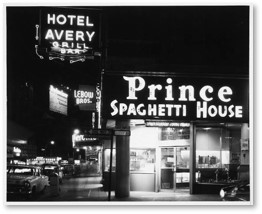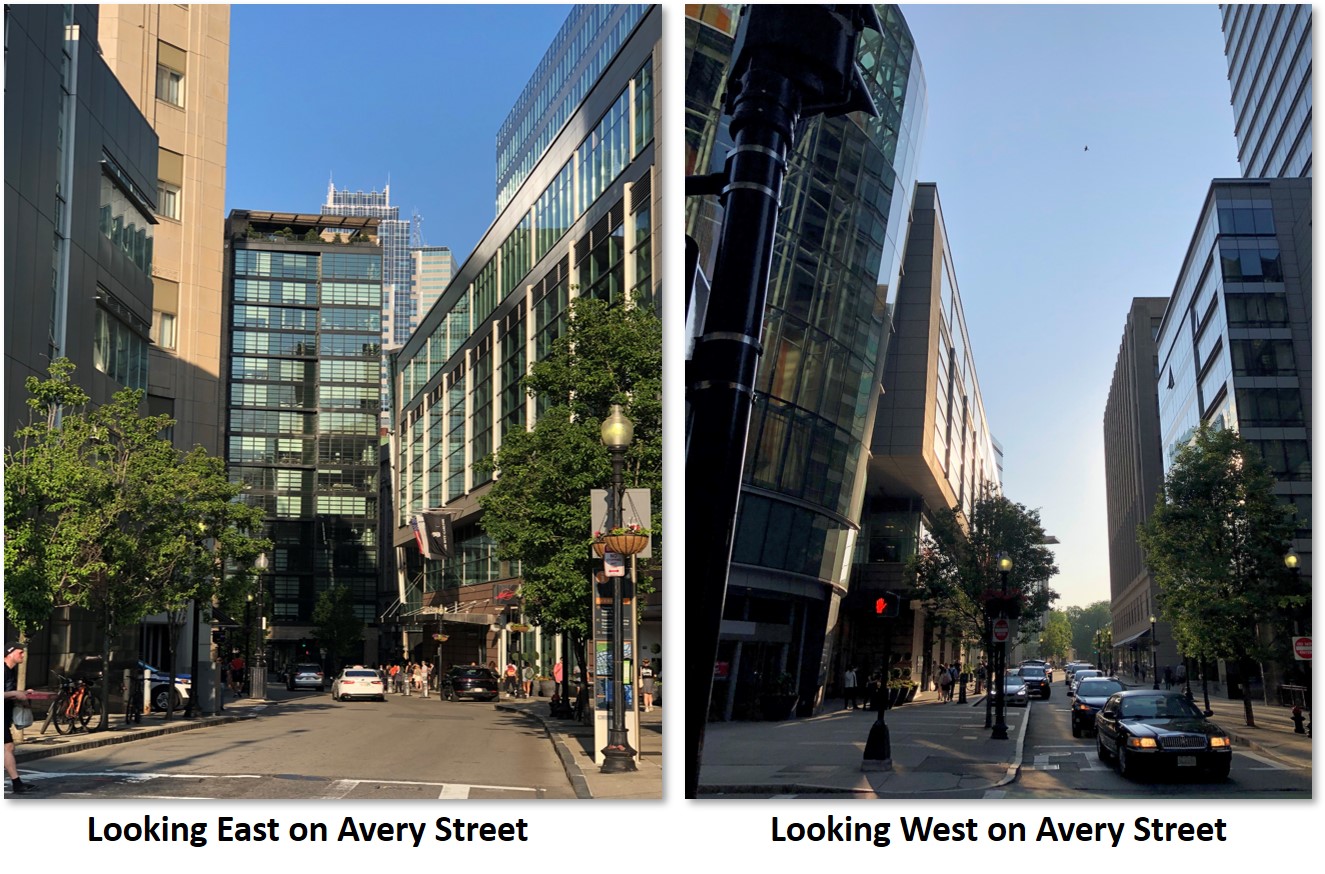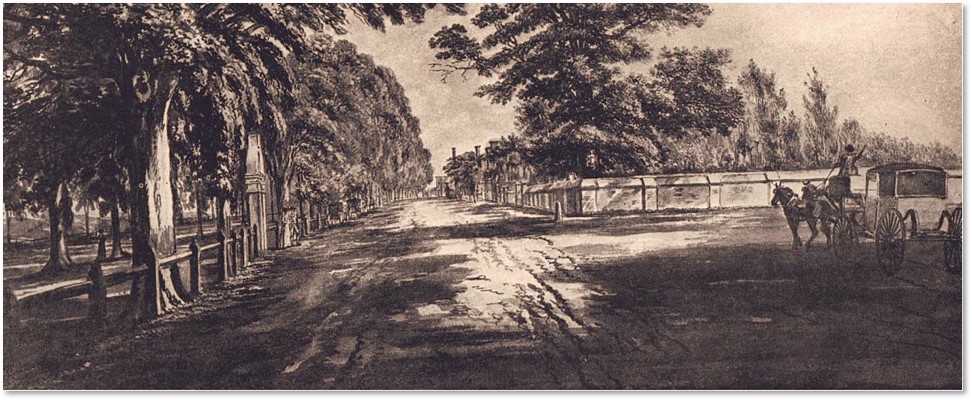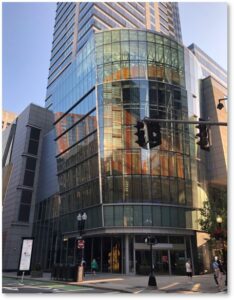Recently I received a real-estate listing for a luxury condominium located at 1 Avery Street in Boston. It made me smile. For decades, no one living in Boston would have written anything on any subject that included the words “luxury” and “Avery Street” in one sentence. That appears to be changing.
For those unfamiliar with this part of Boston, Avery Street runs exactly one block downhill from Tremont Street and Boston Common to Washington Street. It doesn’t appear on anyone’s Instagram account as do Acorn Street or Charles Street. No one takes wedding shots or party photos there. You won’t find it in books about architecture and buildings designed by notable architects. Avery Street doesn’t bear the name of a famous person or place as does nearby LaGrange Street. Fine-dining guides would not It wouldn’t have included it until this century.
So why the luxury condo? Well, Boston developers go where they can make money. An under-utilized, run-down part of the city means they can acquire lots or even whole blocks cheaply. They can tear down gritty buildings that no history buff or architectural society deems worth saving. Easy-peasy.
Changing Names
In 1630, Avery Street was known as “Widow Colburn’s Lane” as it was laid out through her land. That land was formerly part of the lot belonging to William Colburn at the north corner of Boylston Street.
Later on, Avery Street took on the more formal name of Sheaffes Lane from the schoolmaster whose house stood at the corner of Tremont Street. And in 1740 it assumed the far grander title of “the highway which was laid out by John Barrell.” It must have been a short highway, indeed.
At some point it was renamed for a Bostonian named Avery. Massachusetts had no governor and Boston had no mayor by that name. The clock on the face of the organ loft gallery in the Old North Church was made by Richard Avery and installed in 1726. He was the only man of note by that name I could find.
Historic Establishments
Avery Street had some historic buildings in its neighborhood, however. These once occupied the lot owned by Elder William Colburn. Elder Colburn was one of the immigrants who in 1629 signed the agreement in Cambridge, England, to “pass over the seas” and come to the New World. He chose this location when he arrived with the first settlers.
These nearby historic establishments included the White Horse Tavern, which Mr. Colburn’s heirs deeded to Thomas Brattle in 1700. The Sign of the Lion was located south of that and the plot on which it stood later became the site of the Melodeon. Peter Daille, the minister of the French Church, owned the next lot to the south.
Frank Johonnot, a distiller, lived on Avery Street, which would have simplified deliveries to the nearby taverns. Back then, the area was green and pleasant, filled with trees, yards, and gardens.
From Leafy to Seedy
As the city grew the lower end of Washington Street became part of Boston’s commercial center as well as Chinatown and the Theater District. It was a thriving, bustling area where residents went to shop, to dine, and to be entertained in burlesque halls and movie theaters. This photo shows the corner of Avery and Washington Streets in what I think were the forties.
 The Prince Spaghetti House occupied the corner space with the Hotel Avery above it. The Hotel Avery offered a cheap place to stay for working people and ordinary actors appearing in shows at the nearby Colonial Theater. They could fill up with pasta before the performance and maybe pick up a clean shirt at LeBow Brothers Clothiers next door. Next to that was the Washington Street Pieroni’s Sea Grill, about which I have already written.
The Prince Spaghetti House occupied the corner space with the Hotel Avery above it. The Hotel Avery offered a cheap place to stay for working people and ordinary actors appearing in shows at the nearby Colonial Theater. They could fill up with pasta before the performance and maybe pick up a clean shirt at LeBow Brothers Clothiers next door. Next to that was the Washington Street Pieroni’s Sea Grill, about which I have already written.
From Seedy to Gritty
After World War II, however, lower Washington Street was affected by the city’s overall downturn and a virtual depression caused by a lack of investment. Unfortunately for Avery Street, it lay in the wrong place. It was in the part of Boston designated by the Boston Redevelopment Authority in 1974 as an Adult Entertainment District. The street lay smack in the five and a half acres known as the Combat Zone, officially designated for sex, salaciousness, and sleaze.
Entertainment went from legitimate to “adult.” Bars took a dive and music clubs replaced jazz trios with strip-tease artists. Respectable restaurants retreated to other locations, replaced by establishments that fed more nocturnal workers. The Avery Hotel became a “hot-pillow joint,” renting rooms by the hour.
The Zone was a dangerous place in those days. College boys went there, of course, but college girls did not—unless they were paying their tuition with pasties and tassels. For me as a co-ed, Avery Street, along with the rest of the Zone, might as well not have existed. I doubt I could have told you where it was located.
Creeping Gentrification
Even after the AED zoning ended and the New Boston was born in the sixties, Lower Washington Street held on to its grungy, dingy aspect. People were not only afraid to go there, they had no reason to do so. Development (and demolition), construction and reconstruction were going on in other parts of Boston.
Eventually, however, gentrification crept closer and closer until it reached Lower Washington Street. Now the south side of Avery Street holds two businesses: the AMC Boston Common multiplex cinema on the Tremont Street end and the Ritz Carlton Boston Common to the east of that at #10.
Across the street at the east end, rises the Ritz Carlton Residences where our luxury condominium is located. That side also holds a building of the ever-expanding Emerson College. If you aren’t a student, don’t live in the residences or aren’t staying at the hotel, Avery Street offers little. Only the Equinox Sports Club and the hotel’s Artisan Bistro might lure you there.
That could change, however. Change happens in Boston every day. If you had warned Elder Colburn that one day his neighborhood would be a sea of vice and iniquity, he would not have believed you. If you had told the Boston Police and Military Police patrolling the Combat Zone that one day there would be luxury residences on Avery Street, they would have guffawed. But if you check out the view from the condominium on sale today, you might find it worth the money.




